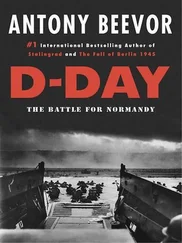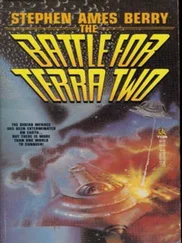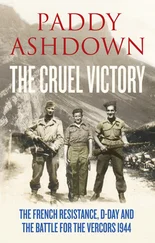On the first Tuesday morning at Iwo, Lucas and three other Marines were fighting in the 5’s drive up Iwo’s west coast. They came to a ravine and were ambushed. Grenades began to fall. One of them dropped among the four Marines. Lucas dove on it. Another came in… Lucas pulled it to him, telling himself: “Luke, you’re gonna die.” The grenades exploded, but Lucas did not die. Though horribly wounded, and left for dead by the men he had saved, he survived to accept his Medal of Honor.
That same day, on the left, or western, flank Captain Robert Dunlap’s company was pinned down while they were attacking a cliff. Dunlap crawled forward through enemy fire to spot the Japanese gun positions. Then he crawled back to relay the information to the artillery and naval gunfire ships. He did this for two days and nights, until the Japanese guns were knocked out and the western beaches were made secure. With these beaches open, supplies could now be unloaded there and thus relieve the congestion on the landing beaches in the east. For his part in this key victory Captain Dunlap won the Medal of Honor.
On the right, or eastern, flank the 5 Division was fighting a fierce battle to overrun Airfield Number One. Throughout the morning, its units were riddled by enemy artillery. Land mines sown in deadly abundance all over the island took a toll of men and tanks. Before the day was over, the Marines were calling for their reserve.
The 21 Regiment of the 3 Marine Division was ordered to go ashore. Its men were astonished. Calling for the reserve on the second day? It had never happened before in all the war. Many of these Marines had been confident that they would not be called into Iwo. “This one will be over in five days,” they said. Even General Schmidt did not believe the conquest of Iwo would take more than ten days.
Yet here, before noon on the second day, the 21 Marines were climbing over the side into their waiting boats. For six hours, in rain and a rough sea, these men circled off Iwo. Then they were ordered back to their transports. They would not come into Iwo until the following day.
Meanwhile, the Marines tried to get more artillery into Iwo. Ducks loaded with heavy 105-millimeter howitzers tried to make it ashore through mounting seas. One after another, eight ducks rolled out of Landing Ship 1032, only to be swamped and sunk by heavy waves. Of twelve guns, only two got safely ashore. Nevertheless, the bigger 155s got in. Landing Ship 779, already famous for being the first to beach at Iwo and for supplying the second flag to fly over Suribachi, came plowing up to the beach. She smashed through the wreckage, swung open her great bow doors—and disgorged four of the heavies on the sand.
The arrival of the 155-millimeter howitzers was an important turning point. These “high-angle fire” guns fired in a looping, up-and-down trajectory. Thus, they could drop shells on the enemy behind his hills, something not possible for the naval guns with their flat line of fire. Moreover, being on land and having their targets pinpointed for them by forward observers, the 155s were also more accurate than bombers. Because of these factors, they were a great help to the Marines as they drove deeper into General Kuribayshi’s bristling defenses.
On the third day, the cold rain that had slowed down the Marines moving against Suribachi also bogged down the Marines attacking north. The 4 Division on the right took heavy casualties as its men tried to overrun the high ground along the east coast. Here, Captain Joe McCarthy won a Medal of Honor by charging across open ground to knock out two pillboxes single-handedly. His objective achieved, he called his men forward to occupy a vital ridge.
On the same flank, little Sergeant Ross Gray fought like a one-man battalion. Sergeant Gray was known as “Preacher,” because he read his Bible regularly and had once maintained that he could not take another man’s life. But when his buddy was killed on Saipan, he changed his mind. On Iwo, Preacher Gray destroyed six pillboxes and killed 25 Japanese soldiers, for which he was awarded the Medal of Honor.
That was how it went on the right flank during that desperate third day, February 21. By nightfall, the 4 Division had lost another 500 men, and the total casualties were up to 2,500.
On the left, the 5 suffered even more grievously. Here the relative flatness of the terrain enabled the Marines to use tanks. Behind these, and supported by shells, rockets and bombs from land, sea and air, the 5 ground out a large gain of 1,000 yards. But it cost 600 men and the 5’s total casualties for the first three days now stood at 2,100
During the day, General Schmidt committed part of the reserve. The 21 Regiment of the 3 Division came ashore and prepared to go into the center of the line the next day. In the meantime, the Japanese began an aerial counterattack.
Japan had one weapon left to halt the American advance in the Pacific. This was the kamikaze. The word means “divine wind,” and it commemorates an event immortal in Japanese history. In 1570 the Chinese Emperor assembled a vast fleet to invade Japan. Helpless, the Japanese awaited their doom. But then a kamikaze in the shape of a typhoon sprang up to wreck the Chinese fleet and Japan was saved.
In 1944 and 1945 the Japanese leaders made a desperate attempt to save Japan once again, this time from American “invaders.” Their strategy was based on the use of suicide pilots, called kamikaze. During the battles of Leyte and Luzon, kamikaze fliers had appeared in large numbers and, instead of dropping their bombs, they had flown directly into the ships of the American invasion fleet.
At dusk on February 21, fifty kamikaze attacked the ships lying off Iwo. Their first victim was the veteran aircraft carrier Saratoga. Six planes came plunging down on old “Sara Maru,” and two of them crashed in flames near her starboard waterline. A few minutes later another kamikaze grazed the Saratoga’ s flight deck and blew a hold in it before crashing overboard. Nevertheless, Saratoga survived the attack. Her fire-fighting crews put out the fires and she began to receive her planes.
Twenty miles east of Iwo Jima the kamikaze came upon a circle of six American escort carriers. One of these was the Bismarck Sea. A mixture of rain and snow was falling when, at a quarter to seven, a kamikaze came boring in on Bismarck’ s beam. A destroyer saw the plane but withheld fire, believing it to be friendly. It was not, of course, and the suicide plane struck squarely amidships. The stricken ship bucked and quivered. Torpedoes fell from a rack and exploded. Parked airplanes caught fire. Ammunition fell into the flames and began exploding.
At seven o’clock came the order: “Abandon ship!” Over the side, into the cold, black water, dove 800 American sailors and Marines. Down came the Japanese aircraft to strafe them while escort ships rushed to their rescue and fought off their inhuman assailants. Then there was a rocking explosion. Bismarck Sea ’s stern had blown off, and she rolled over and sank. Lost in the waters around her were 218 Americans.
Three other American ships were also attacked that night, but none was lost. And of the 50 enemy aircraft that had come from Japan in the only successful counterstroke of the Iwo campaign, not one returned to base.
In the early morning darkness of February 22, the 3 Division entered the fight. Its 21 Regiment relieved the exhausted 23 of the 4 Division. Now forces advancing up the island consisted of the 5 on the left, the 3 in the center and the 4 on the right. But the 3 could make little headway in the center, attacking during a cold rain and under heavy enemy fire. By nightfall they had gained only 250 yards. The men of the 3 had quickly learned that Iwo Jima was indeed an iron nut of an island to crack.
Читать дальше











